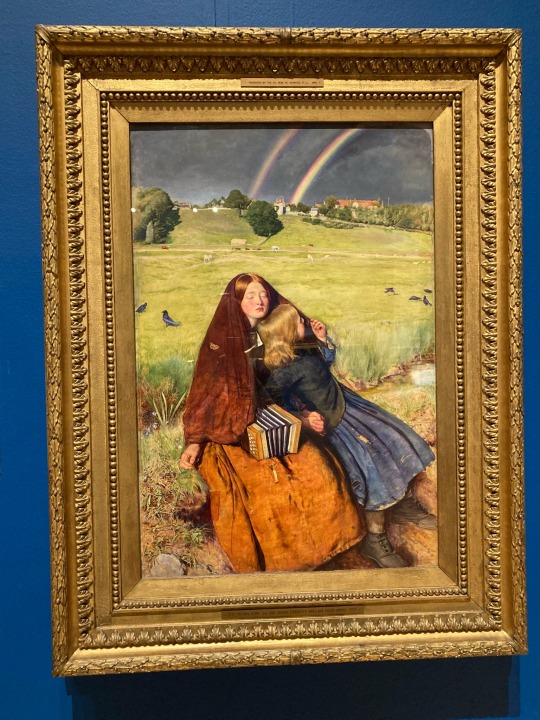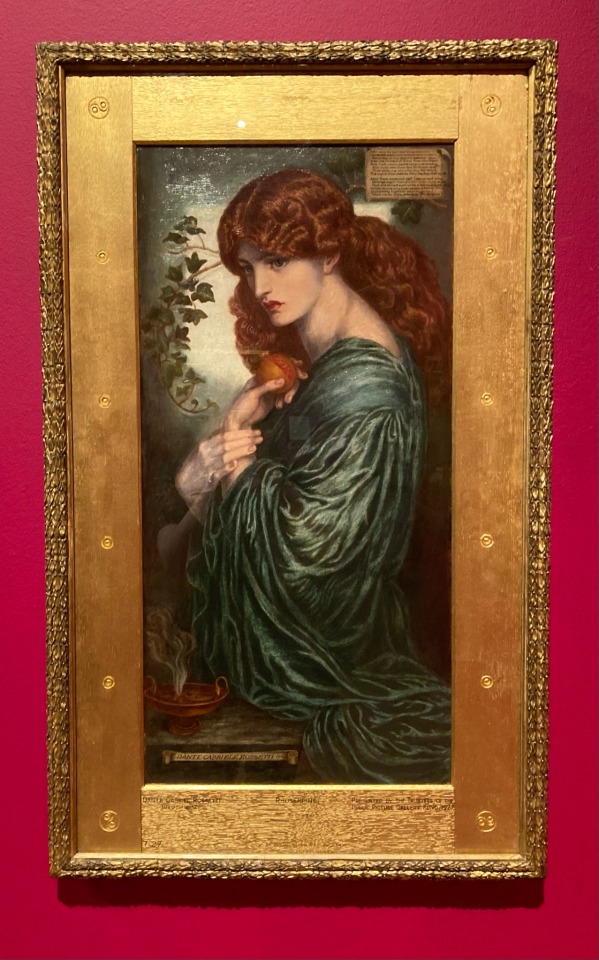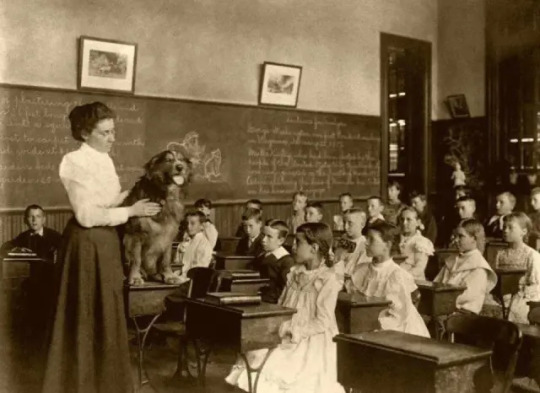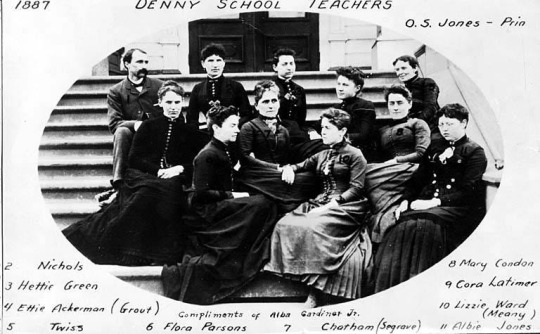#victorian radicals
Explore tagged Tumblr posts
Text









Victorian Radicals exhibition at the Museum of Birmingham (2024)
Haha so posting this here aswell because that’s what this blog was originally for but I guess I got sidetracked slightly by Malevolent and other things. But these pre-raphaelite pieces are absolutely gorgeous and I’ve been waiting years to see them in person and I just want to share them with everyone xoxo
First image : The Blind Girl - John Everett Millais (1856)
Second image : Valentine Rescuing Sylvia from Proteus - William Holman Hunt (1851)
Third image : Dante - William Holman Hunt (1882-1883)
Fourth image : Prosperine - Dante Gabriel Rossetti (1874)
Fifth image : Medea - Frederick Sandys (1868)
Sixth image : The Lady of Pity - Dante Gabriel Rossetti (1881)
Seventh image : Morgan le Fay - Frederick Sandys (1864)
Eighth image : Beata Beatrix - Dante Gabriel Rossetti (1877)
Ninth image : The Keepsake - Kate Elizabeth Bunce (1899)
More posts of the same to follow
#art history#birmingham museums trust#dante gabriel rossetti#edward burne jones#jane morris#elizabeth siddal#victorian radicals#pre raphaelite#arts & crafts#traditional art#oil paintings#john everett millais#kate elizabeth bunce#frederick sandys#william holman hunt
25 notes
·
View notes
Text

Kilhwych, The King's Son
Artist: Arthur Joseph Gaskin (English, 1862-1928)
Date: 1901
Medium: Tempera on Panel
Collection: Birmingham Museum and Art Gallery, Birmingham, England
#mythology#arthur joseph gaskin#english painter#early 20th century art#tempera on panel painting#pre raphaelite#victorian radicals#horse#dogs#men#prince
5 notes
·
View notes
Text

Kilhwych, The King's Son
Artist: Arthur Joseph Gaskin (English, 1862-1928)
Date: 1901
Medium: Tempera on Panel
Collection: Birmingham Museum and Art Gallery, Birmingham, England
#mythology#folklore#greyhound#birmingham museums trust#birmingham museum and art#pre-raphaelite#horse#victorian radicals
0 notes
Text
Anna Kingsford- Victorian Feminist and Animal Rights Campaigner
An extract from my book which features more Victorian Radicals like Anna In a freezing February in 1888, a vicar’s wife lay dying at the tragically early age of forty-one. Her husband was the vicar at Atcham, Shrewsbury, but her deathbed scene unfolded at their rented flat at 15, Wynnstay Gardens Kensington, a newly-built mansion block of apartments for the respectable middle classes. She had…

View On WordPress
0 notes
Text
A man’s thigh is for walking, but a woman’s is for walking and looking “beautiful.” If women can walk but believe our limbs look wrong, we feel that our bodies cannot do what they are meant to do; we feel as genuinely deformed and disabled as the unwilling Victorian hypochondriac felt ill.
�� Naomi Wolf (1990) The Beauty Myth
#health#double standards#victorian invalidism#naomi wolf#the beauty myth#radblr#radfem#radical feminism#radfem safe#radical feminist safe
155 notes
·
View notes
Text
also anon that sent the very sweet ask I’m not posting it bc I wanna keep rereading it hehe
#no longer posting into the void#posting directly into my followers frontal lobes#you’re gonna perceive freaky radical mega simp victorian doctor jack#and you’ll have a great time!
2 notes
·
View notes
Text
Hello chronic pain havers just letting you know any time I think “I am so sick” a man with a surfboard appears behind me and goes “YEAHHH, sick as HELL duuuuude!!!!” If you take your meds he might appear to you too
#I am bedridden like a little Victorian child#it’s giving Edward Cullen when he had the Spanish flu#it’s just so slay to be this sick radical bro#please help me my joints are hunting each other for sport#chronic pain#disability
11 notes
·
View notes
Text
I think people have confused the fact that it's definitely possible to go "look this magical guy told me these are the rules so now you all have to obey" with believing that religion is intrinsically just that. and it's like they just discount the possibility that anyone has ever earnestly believed in a higher authority or genuinely had a mystical experience or whatever. the thing is if you actually observe how religious people behave, especially if you look outside of like evangelical megachurch pastors who are clearly just grifting, it immediately becomes pretty hard to ignore that.
for every example of religion maintaining inequality u have muslim charities successfully preventing FGM by informing muslim communities who perpetrate it that it's haram, sikhs opposing casteism, early christians fighting gender inequality etc etc etc + on an individual level literally countless people who have fought against poverty and oppression on the basis of religious belief. like... IS it really something specific about religion or is it the fact that hegemony will naturally pick up and spread whatever supports it and suppress whatever doesn't?because the same can also be said of like... music... so are u going to say music is just a tool of the elite or whatever? bc it definitely can be. but it's equally a tool for resisting oppression and also just a significant part of the human experience.
aren't we meant to be postmodernists now like i think maybe things sometimes do just happen sometimes. what Society does with it after the fact is another question, but if you look at the history of religion I'm surprised if you don't come away with some awareness that genuine belief in some sort of authority or mechanism which is outside of human control can be something very transformative. like the fundamental innovation of the torah was to say that every human life is equal to every other human life in opposition to the code of hammurabi which said that some people's life = other people's pocket change. only a power which comes from somewhere outside human society would be able to ensure that law was applied fairly and equally to all rather than manipulated on the whim of the human with the most power to enforce it. if the "abrahamic" religions can be said to have anything in common at all, it's probably a call to humbleness and the value of every human being. much to think about!!!!
#religion kind of just makes u more like whatever ur already like ngl#if anything can be said universally of religion it's probably just that#which is why I said what I said abt gay catholics#sorry everyone I needed to say this because I was trying to work out what was bothering me abt#the book I just read teehee#watched a documentary abt another gnostic gospel and it is just so like#yeah religion is transformative at the margins of society and oppressive at the centre#like so is everything in the world. what else is new#if you don't want to read this whole post then just go watch yentl. you'll understand#like it's easier to think about w music bc something I noticed w like victorian era popular music was literally like#the average guy just starts liking something because. it's exciting and interesting to him#and then there is some kind of move to retain control#like minstrel shows in the uk were partly a reaction to genuine enthusiasm for african american music because like. it's good and it's also#super different to anything people had heard before#so then there was this like. move to take control from black performers by having it be white performers doing caricatures at their expense#music hall was something people just started doing and then was ultimately turned into a whole panopticon of control#see also: every radical music genre that gets watered down and commercialised#anywayyyy hiii
3 notes
·
View notes
Text
Oh yeah, there's a lot of equating queer femininity which is its own distinct stylistic identity with the standard expectation of femininity in society. It's coming from a lot of people who don't engage with sapphic culture or sapphic spaces offline and have no understanding of the history of those spaces and cultures.
Any feminine stylistic presentation is seen as inherently for and serving the patriarchy and anti-feminist when for many femmes, it's a presentation of their queerness and so, so obviously a way to signal that queerness to the girlies. It's a stylistic choice similar to butch styling, a way to signal your lesbianism or queerness.
And it's stylistically distinct from "standard expectation of femininity expected of and forced on women."
I don't know why they don't understand this but I like to assume it's because they are literal children or otherwise very young and just genuinely don't know anything about history and hopefully will one day learn and realize they've been sucked into an online radicalization pipeline.
I know SEVERAL afab nonbinary people who, as soon as they came out as nonbinary - immediately began dressing in ridiculous hyper-femme outfits they never would have worn before. A lot of people see this and say shit like “Theyfab” or say they are only nonbinary for attention. After all, look how femme they are.
But to me, this makes perfect sense. When you are forced into the category of “woman” against your will, femininity is a chore. It’s a job that you have. As soon as you say no, I’m not a woman, suddenly femininity isn’t your job anymore. It’s not a requirement. It’s just a fun hobby you can get into. Or a little treat sometimes.
#radical feminism#radfems#sapphic culture#sapphic#femme#once again I am just a sickly victorian child explaining this#I rarely dress femme myself
84K notes
·
View notes
Text
thinking about the infantiliztation and/or formalization of 19th-century women's clothing to modern audiences
like
our entire reference point for "wearing long skirts and outfits with decoration like lace, embroidery, appliques, etc." is either formalwear or fictional characters in children's media like Disney princesses. women's clothing is just so radically different now- not that those elements don't exist, but they're much less common in everyday clothing than they once were. some form of simple trousers and an equally simple top are de rigeur for everyday attire, and anything else is Fancy
combined with the fact- which is true! -that a lot of what survives to end up in big museums belonged to wealthy people, this ends up in wild assumptions like "basically our entire idea of what the Victorians dressed like is just Rich People Clothes really"
which has led to the eternal cry of "but what did NORMAL people wear?!?!?!" that will not be satisfied with real examples of middle or even working-class everyday clothing because it still looks too "fancy" to modern eyes
not Victorian, but a great example of this is what Abby Cox wore to portray a milliner (hatmaker) in Colonial Williamsburg. a working, middle-class woman:

(ignore the facial expression there)
this is the exact outfit she sported in a video that apparently got responses like "but that's just what rich women wore!" and it is, in fact, everyday attire for a working person. a person who worked in the fashion industry, it's true, but still
I had someone ask me about how to find examples of casual Victorian clothing because they were at their wits' end trying to research it. and I had to tell them that...what they were looking at WAS casual. in the sense of Clothing For Everyday Wear That's Not Especially Formal. there's nothing inherently formal, or exclusive to the wealthy, about a matched bodice-and-skirt dress, instep-length, with some trim. or even a trimmed blouse and skirt. obviously women working the absolute hardest outdoor, physical jobs might have adopted occupational trousers or similar, but we don't all dress like construction or farm workers all the time nowadays. why would they have back then?

Laundresses, probably 1850s or early 60s. Note that I can STILL date the picture based on their outfits and hair, and these are the furthest things from wealthy socialites.

Maid scrubbing steps, probably 1870s or 1880s. Note pleated trim on her skirt and what appears to be a peplum at the back of her bodice.
also, not all working women worked physical jobs any more than we do today. here is a teacher around the turn of the 20th century:


Teachers, 1887

"Breton Seamstresses," 1845, by Jules Trayer
were there differences in quality, type and quantity of trim, fit, etc? obviously. but some people are convinced that the basic outfit format can't POSSIBLY have been something ordinary women wore, because it looks formal and/or princess-y in a modern context
7K notes
·
View notes
Text

Trapeze artist, strongwoman, and all around badass Laverie Vallee, stage name Charmion, flexes for the camera in this (colorized) picture from around 1905. Born in 1875 in Sacramento, Charmion was a pioneer. She shocked conservative Victorian/Edwardian men with her daring "Trapeze Disrobing Act" (which was the subject of one of Thomas Edison's first films) and her insanely jacked body. But the ladies loved her, and her performances, which were viewed as practically pornographic by the extreme standards of the time period, were mostly attended by women. Throughout her career, she inspired women to exercise and to free themselves of the restrictions society placed on them. Charmion criticized the prudish attitudes of the time and told women they could be just as strong as men (this was a radical claim for that era, but her own body was the proof). A brilliant woman, she was fluent in six languages and regularly lectured and wrote newspaper articles about fitness. She was the highest-earning performer on the vaudeville circuit for much of her career, sometimes earning as much as $500 per week (equivalent to almost $20,000 today). Charmion was known to curl 70-pound dumbbells as part of her workout regimen and she could walk 12 miles without feeling fatigued. Charmion's biceps reportedly were almost exactly the same size as those of Eugen Sandow, who was widely considered the world's strongest man, and in a friendly sparring match she fought on an equal footing with the then-famous boxer Terry McGovern. She retired in 1912 and lived a quiet life outside the limelight until her death in 1949.
EDIT: I made a second post with some more info about Charmion if anyone's interested:
#history#feminist#fuck the patriarchy#victorian#edwardian era#women's history#women in history#gender roles#badass
1K notes
·
View notes
Text
A century ago, normal female activity, especially the kind that would lead women into power, was classified as ugly and sick. If a woman read too much, her uterus would “atrophy.” If she kept on reading, her reproductive system would collapse and, according to the medical commentary of the day, “we should have before us a repulsive and useless hybrid.”
— Naomi Wolf (1990) The Beauty Myth
#victorian invalidism#medical misogyny#naomi wolf#the beauty myth#radblr#radfem#radical feminism#radfem safe#radical feminist safe
10 notes
·
View notes
Text

Before.


After. What is that geometric thing?
Actually, I wouldn't call this a real "Painted Lady." Why does it look bleary?
Xavi Art, San Francisco -
Designer: Xavier Panneton
"Side view of the historic Victorian 'Painted Lady' I had the honor of painting in San Francisco last summer."
"The challenge was to create a design that honored the past while radically departing from it, creating something that integrated the two in a harmonious way."

This is how a real Painted Lady looks. So Beautiful. I'm a purist.
1K notes
·
View notes
Text


“God I want you in some primal, wild way animals want each other. Untamed and full of teeth.
God I want you in some chaste, Victorian way. A glimpse of your ankle just kills me.” - Want, Clementine von Radics
#good omens#good omens edit#michael sheen#goodomensedit#ineffable husbands#goedit#good omens spoilers#david tennant#1k
3K notes
·
View notes
Text
PODTOBERR
i couldn't decide between doing the treadmill for first meeting or the stitches so i DID BOTH HUZZAH‼️
total loser moment but it felt weird not to draw sherlock in pink crocs for once
also what a fantastic first impression absolutely insane


AND of course victorian as well. it looks um. not radical but we can look past that. GOD drawing suits brings me back to my cuphead era im illll


BONUS DOODLES GOODNIIGHTTT💙


okay guy on treadmill isn't a doodle he's just incredible at being on a treadmill
#sherlock and co#johnwatson#sherlock holmes#art#podtobershco#shco#ever just think “i dont think ive drawn a treadmill before”#that was me
221 notes
·
View notes
Text
Absolutely frothing at the mouth reading North and South (victorian novel that uses romance as a vehicle to talk about radical-at-the-time ideas about class and social services) when Margaret argues that the upper class should help the poor (because inherent superiority of upper class and lowkey christian paternalism) and Thornton argues that the poor should help themselves and suffering builds character (because of inherent equality of all people but also the birth of rugged individualism and rampant capitalism) and Thornton and Margaret are so pissed off but also are on a collision course to kiss about it (and both challenge all their preconceived notions of class, wealth, and social services) and this was all 13 years before Karl Marx wrote the first volume of Das Kapital. Listen, I'm not saying North and South is the greatest book of all time from either a social justice or romance perspective but I will say that I have massive overwhelming brainworms about it and I need everyone to read it right now.
199 notes
·
View notes